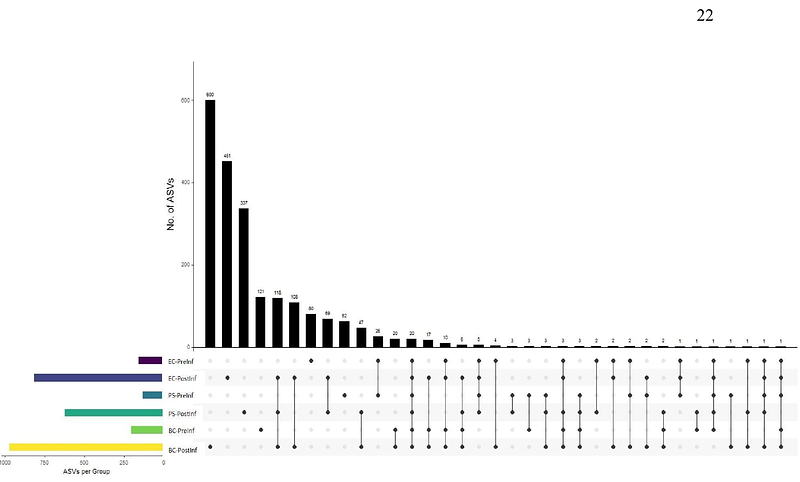Microbiome dynamics associated with the infection of grey field slugs by the biocontrol nematode Phasmarhabditis hermaphrodita

Microbiome dynamics associated with the infection of grey field slugs by the biocontrol nematode Phasmarhabditis hermaphrodita
Ha, A. D.; Howe, D. K.; Colton, A. J.; McDonnell, R. J.; Denver, D.
AbstractThe facultative-parasitic nematode Phasmarhabditis hermaphrodita has been used for many years as a biological control agent targeting slug pests. During the nematode\'s infection process, the presence of certain bacteria has been suggested to affect the pathogenicity and efficiency of the nematodes in killing slugs, though the potential roles of different bacteria in affecting host-infection by nematodes remains unclear. In this study, we examined three experimental P. hermaphrodita populations cultured with three different bacteria: 1) Escherichia coli (EC), 2) a newly isolated Pseudomonas sp. Strain (PS) that co-cultured with a P. hermaphrodita strain found in Oregon, USA, and 3) the original complex bacterial community (BC) associated with the nematode. For each of the three treatments, we evaluated the pathogenicity of P. hermaphrodita at a low and high concentration towards adult Deroceras reticulatum (Mollusca: Gastropoda) and investigated the changes in the nematode microbiome structure before and after slug infection. Slugs exposed to EC low treatments (LT50: 8.61 days) and EC high treatments (LT50: 7.74 days) survived significantly longer than slugs exposed to PS high (LT 50: 5.68 days) and BC high (LT50: 5.92 days). Slugs in the BC low treatment (LT50: 6.77 days) survived significantly longer when compared to BC high, but survival was significantly shorter when compared to EC high. We identified a wide variety of taxa components (82 genera) in the community associated with the nematode pre-infection, most of which are of low abundance. In all bacterial treatments post-infection, the number of genera almost quadrupled and those taxa\'s abundance changed remarkably, although the taxa with the highest abundance remained stable. We also observed four Pseudomonas amplicon sequence variants (ASVs) that increased in abundance after slug infection in the Pseudomonas treatment, which may suggest a role of the taxa in the infection process.